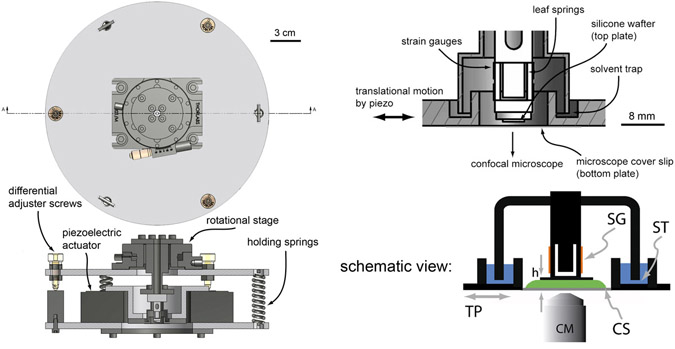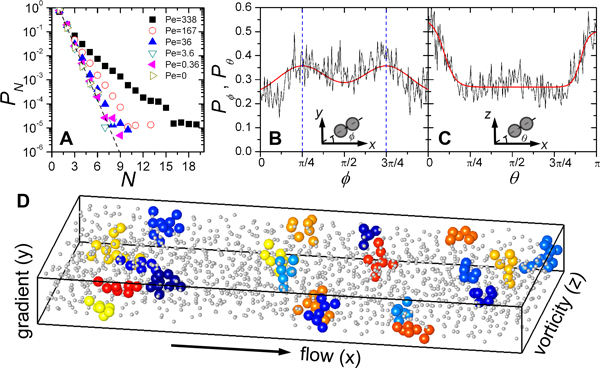Colloidal suspensions – where micro-size or nano-size particles are suspended in a fluid – exhibit various equilibrium structures ranging from face-centered and cubic-centered crystals to binary ionic crystals, and even kagome lattices. When driven out-of-equilibrium by shear, even more diverse colloidal structures can be accessed. These structures lead to unique flow behaviors of suspensions. Exploring the shear-induced colloidal structures and understanding how these structures affect the flow of colloidal suspensions is crucial, if we want to control the flow properties of suspensions in many industrial processes.
To achieve this goal, we designed the confocal rheoscope, an apparatus which combines a fast confocal microscope with a custom shear cell and a delicate force mearuement device. This apparatus allows us to image real-space 3D particle structure while simultaneously measuring suspension rheology.

A colloidal suspension shows various non-Newtonian flow behaviors such as shear thinning, shear thickening, viscoelasticity.

We characterize particle structure of a suspension with a 3D pair correlation function. Shown here are the 2D cuts from a 3D pair correlation function.

We find that shear thinning is directly related to the competition between Brownian motion and shear-induced flow motion.
At low shear rates, Brownian motion is sufficiently rapid to restore the equilibrium suspension structure from entropically less favorable shear-induced configurations.
At higher shear rates, the equilibrium suspension structure is distorted due to the hydrodynamic drag on particles, which compresses particles along the 45 degree direction with respect to the shear flow.
The decrease of the entropic contribution to the total stress, indicated by the oscillatory distortion shown in the movie above, results in the measured shear thinning effect.

At even higher shear rates, colloidal suspensions show a weak shear thickening behavior. We identify the formation of cluster structures in the shear thickening regime, which is consistent with previous numerical predictions.

Our measurements provide experimental evidence for the entropic origin of shear thinning and the hydrodynamic coupling that leads to shear thickening. The combination of imaging techniques and force measurements presented here illustrates a powerful approach for investigating the microscopic origins of non-Newtonian flows in structured fluids.
Read more about this research in our paper "Imaging the microscopic structure of shear thinning and thickening colloidal suspensions" (Science 333, 1276, 2011).
